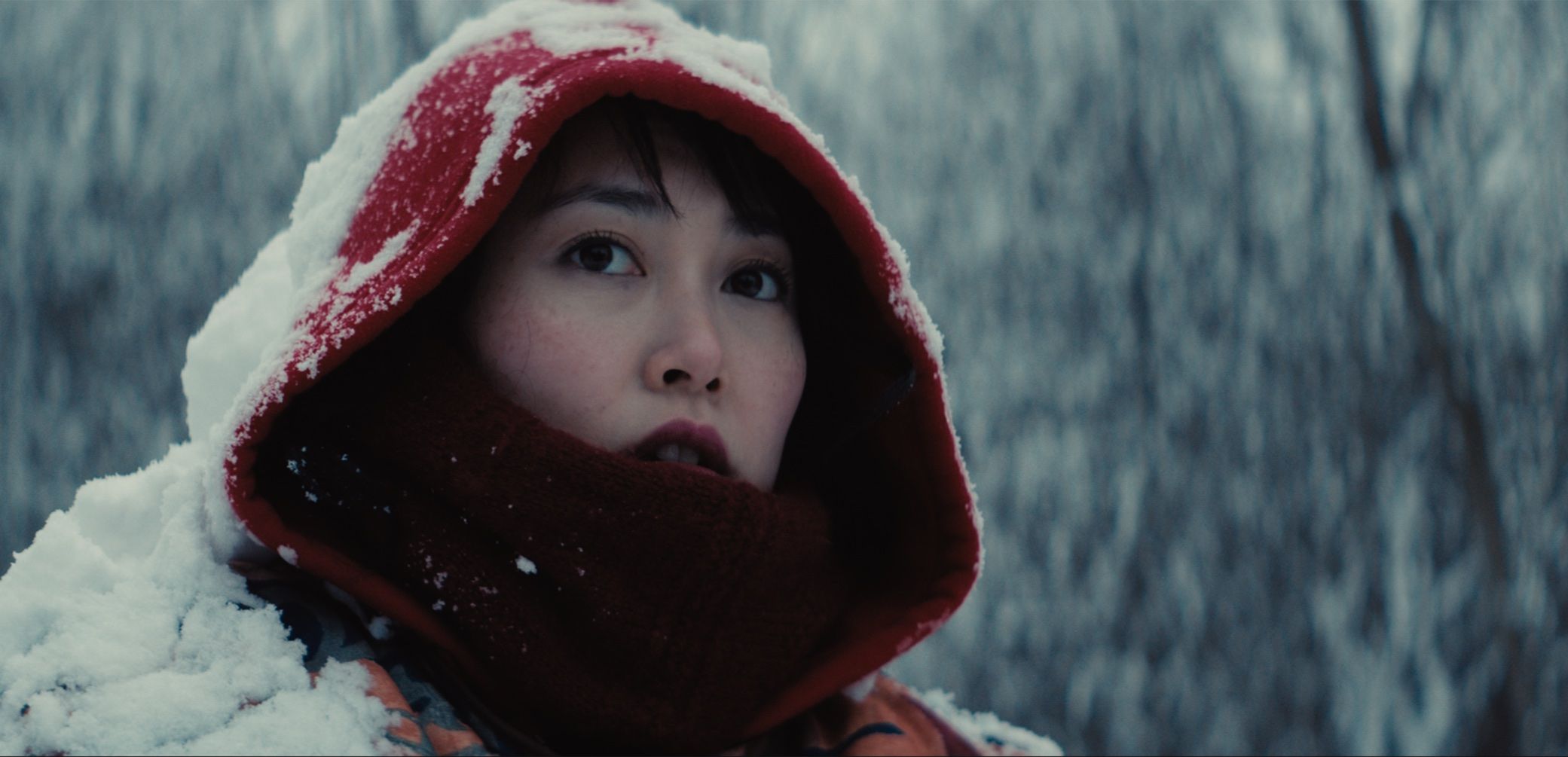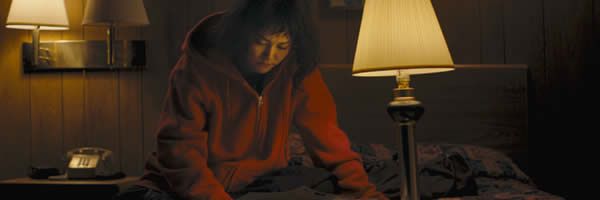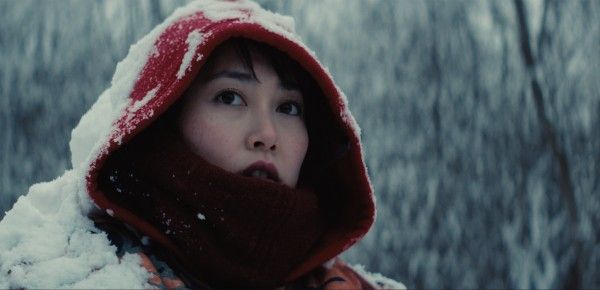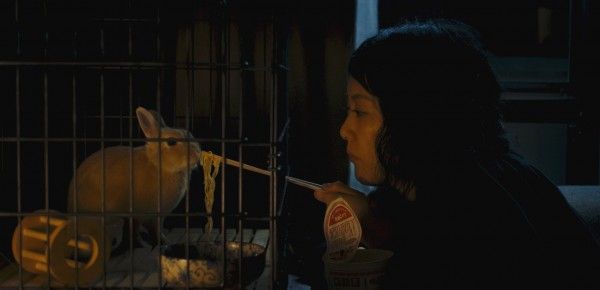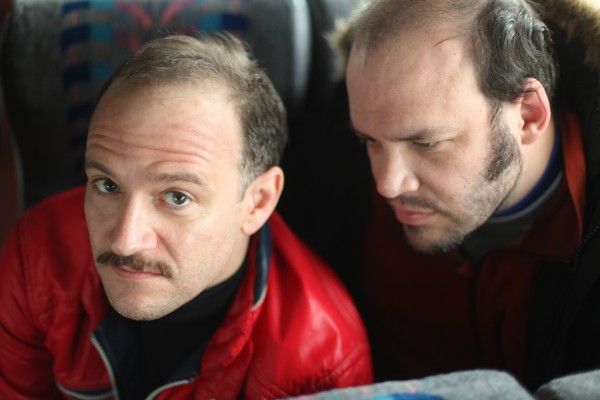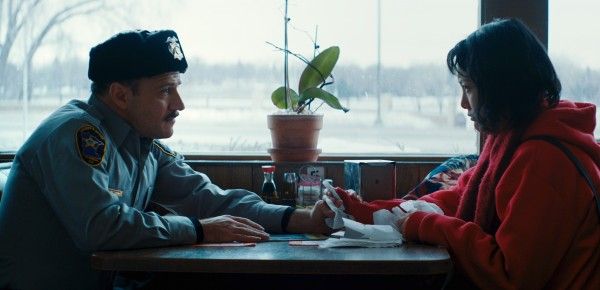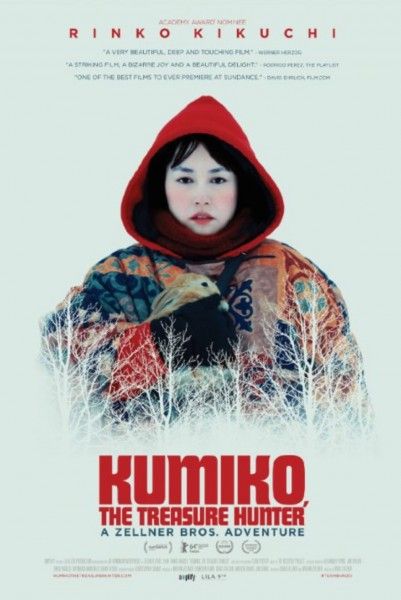Kumiko, the Treasure Hunter could have been so bad. Nine times out of ten, when indie filmmakers approach a subject that's already supercharged with quirk (as is the case of the urban legend surrounding the real-life disappearance of Takako Konishi - who ultimately committed suicide) they lead into that quirk in an unbearable way. David Zellner and Nathan Zellner chose to do the opposite. For these Austin based writers/directors, the only way to tackle the story was with humor, compassion, and and a very human understanding of the tragedy at the center of their story.
Having seen and loved Kumiko, the Treasure Hunter, I hopped on the phone with the Zellner brothers last week to talk about their singular approach to the material. We also discuss the bifurcated shooting schedule (half of the film was shot in Japan, the other half in the U.S.), bringing Rinko Kikuchi onboard and working with The Octopus Project, who won a Special Jury award at Sundance for their work on the score (full disclosure -- you may have noticed me tweeting a lot about that score. I have worked with several members of that band over the years and consider them to be friends). Check out my interview with the Zellner brothers below. Kumiko, the Treasure Hunter is now playing in select theaters.
Collider: There are a million bad versions of this movie out there that could have been made had you guys not made the good version of it. Can you talk a little bit about the compassion with which you approached this project? I think that’s what sets it apart.
DAVID ZELLNER: Yeah. When Nathan and I were putting it together, that was the most crucial element for the whole thing was that it would be so easy to make it a snarky, glib kind of spectacle, you know, kind of film, or make her a little bit of a Japanese “Amelie” or something like that. That was like the last thing we wanted to do. We wanted to avoid kind of sexualizing her, making her this cute little poofy spectacle. And that was everything that we wanted to avoid. And we wanted to have a sense of humanity and compassion and empathy for her, and that felt like what was most responsible for this film. And then the film is completely through her perspective, so it was essential that people hopefully connect with her on a human level. And um, you know are willing to go for the ride with her as opposed to people kind of laughing at her and waiting for her to fail, that sort of thing.
When you guys start in on your writing process, how do you kind of break it down? Obviously you read something about this story or this urban legend that fed into this script, but how do you develop the material from there?
DAVID: Well, the little bit of information that we started from was just something, you know this was before social media took off with Facebook and whatnot and the message boards, the bare bones information about a Japanese woman going to Minnesota in search of the treasure. It was the lack of information that drew us there and made us kind of come up with answers on our own to fill in the gaps. As well as the antiquated notion of someone going on a treasure hunt, like something from the age of exploration, so those were the elements that drew us in. We had our own obsession with this story while making it. We started with those elements and kind of built it out from there.
How does shooting in Japan differ from shooting in the US?
NATHAN ZELLNER: We broke it down into two separate films almost (Japan and Minnesota). We shot them back-to-back. So we had a pre-production thing in Japan and a whole separate pre-production thing in Minnesota. And everybody was local except for David, myself, our producing partner, Chris Olsen, and our photographer, Sean Porter. So we landed in Japan and our goal was to just kind of really communicate what our tone was and what kind of film we were going for. And we were really open to cultural notes and that sort of feedback and really wanted to work with them and get them on board with the kind of film we were going to make. The pre [production] structure is a little bit different over there, but it’s similar to our background in smaller budget features and essentially extended back to when we were little making features of our own. They all got sold on the film and all got what we were going for. If something needed to be done on set or moved or picked up or resolved or figured out, like there was a lot of collaboration over there which is kind of the way we like working. It really helped. Most of the crew was bilingual but most of the cast wasn’t, so it helped a lot with the language barrier. And you know, casting and locations and all of that stuff. We wanted to create this non-tourist version of Japan.
And how did Rinko Kikuchi’s involvement come about?
NATHAN: We wrote the first draft of the script shortly after reading the urban legend online in 2002. It took a while to make. And we made a couple small features and a bunch of shorts and got some good recognition, and we met Rinko in 2008 and just had lunch with her. We were looking for a good Japanese actress to put in this role and we had seen her in Babel. The character of Kumiko is introverted, and she does a lot of thinking and processing without there being inner monologues or voiceover. So it was essential for us to find somebody that could really express the character with their physicality and that sort of thing, and then we met with Rinko and saw her previous work. She got the tone we were going for and had the same sensibilities in a lot of other ways, and we were able to talk with her on that level. And then also seeing, when we finally got to shoot the film with her, how well she is with her physical presence as an actress. When you watch her, you know what’s going through her head without someone having to explain it to you, just based on watching her.
Absolutely. I think she’s incredible.
DAVID: And I think that’s why, because, like Nathan was saying, we essentially made two different films. You need everything to be the same, at least tonally and structurally, and this is a testament to the people we worked with, with both crew bases. During production, everyone knew we were making the same kind of movie. I think that’s where you can run into problems where filmmakers don’t know what they want or they’re not articulating it. And so you can end up with some kind of mish-mash essentially. And this thing was lined up to be a mish-mash, it could have very easily gone in that direction. We thankfully knew what we wanted and made clear from the get-go tonally what we were trying to accomplish. And everyone dialed it in and they got it.
Shooting in Minnesota too, that must have been pretty brutally cold, right?
NATHAN: Yeah.
How do you navigate that?
NATHAN: Well, we had a crew based there that was mostly Minnesota based, and they were kind of used to working in those kind of conditions. And you know a good portion of that is outdoors. We basically did the opposite of what you do in a lot of other films in terms of cover sets. We would have a cover set to go indoors if the weather was too nice. And to make sure we would be mobile and flexible enough to go outside when the weather was rough because we had very limited resources and budget there. We kept it mobile enough to where we could adjust accordingly embrace the elements. It was a completely different challenge with each section of the film.
What's the communication process with The Octopus Project like? Do Josh, Yvonne and Toto just kind of watch the footage and come back to you with something? How does that whole thing work?
DAVID: Well, we’ve worked with them you know for over 10 years and we’re really good friends. And um, from being friends, we have similar tastes in movies and music, and we’re always trading and sharing movies and music and that sort of thing. And so we all have that same dialogue going back and forth. And having worked with them before on Kid Thing, we already had that shorthand. Long before we saw any of the film, before we were even shooting, Nathan and I went over the kind of mood we were going for and what we wanted to convey with the sound. We gave them music that maybe wasn’t a direct link to what we were trying to do, but it was kind of a tonal inspiration. We had references that were like all over the place, but that was a lot of fun. It’s kind of a foundation to work from. And going from there, Nathan could elaborate on it more, because Nathan does the sound design. We wanted very much for the two to kind of blend together.
NATHAN: We had earmarked roughly maybe a dozen specific music cues. We cut about half the film so I think we gave them the Japanese portion first. And then just had them kind of expand on the things we knew we needed and then add the things that they thought would be a good fit. We just started trading files, you know we would trade cuts with them, and they would send song ideas and sometimes they would break out and send music stems. That way we could take certain elements of a track and fade them out and fade in some of the sound design or natural ambience or whatever.
So it was pretty collaborative. We were lucky that we had them so early on, and the way we had it is we’re doing the sound design and the dialogue editing, and all the sound work, we’re doing it as we’re editing the picture or figuring out the rough cut. So the rough cut has a lot of these final elements already in it. And it just helped with the pacing of the film, and helped with those types of decisions and helps maintain that we’re on the same path and the tone that we want.
There would be sometimes that we would know that we would need certain elements from a song and we would get back an audio file that had sixty minutes of amp cracks and hums and dings and that sort of thing. So we’re listening to these really long takes of crazy fun noise that we can play with. That made the whole process really enjoyable. Like our picture would sometimes influence the way they would edit the music, and sometimes the music would make us go back and edit a scene a little differently, or shorter, or whatever. They went hand in hand really well.
What’s coming up next for you guys?
DAVID: Thankfully, we have no shortage of ideas. We have all kinds of films that we want to do. We have a few different ones, it doesn’t matter which one takes off first. But we’ve been caught in getting the word out about Kumiko in the meantime.
And I mean, there’s this trend of people who direct lower budget films getting snagged to do these giant blockbusters. Has there been any talk of a scenario like that with a bigger film?
DAVID: Not specifically, but we like all kinds of films, and you know we definitely have stories we want to tell that are on a much larger scale. And just um, we definitely would entertain doing bigger projects, with something that would maintain this kind of integrity and talent. Applying our sensibility to something on a large scale would be a fun thing to do, and we’re definitely open to that. But if not, we have enough of our material that we’re good.

